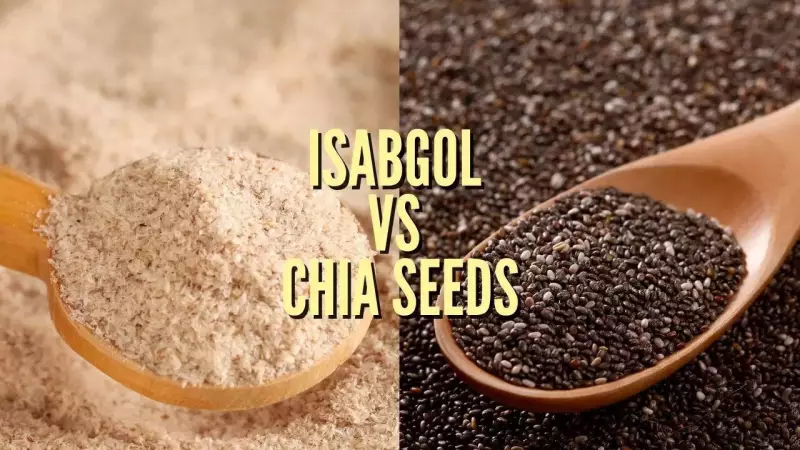
Fiber stands as a cornerstone of digestive wellness, and among the plethora of natural options, Isabgol and chia seeds have emerged as frontrunners. While both are celebrated plant-based sources that boost your total fiber intake, they possess distinct characteristics, behave differently within the gut, offer unique nutritional bonuses, and target specific health outcomes. Understanding these nuances is key to selecting the ideal one for your personal health objectives.
The Core Fiber Facts: A Tale of Two Types
Isabgol, commonly known as psyllium husk, is predominantly a soluble fiber. As noted by sources like the NIH, its remarkable ability to form a gel when mixed with water is its defining feature. This gel slows down the process of gastric emptying and effectively traps substances like bile acids, dietary fats, and sugars. This mechanism is directly responsible for its measurable impacts on cholesterol levels and blood glucose.
Chia seeds present a different fiber profile. They are packed with fiber, offering about 30 to 40 grams per 100-gram serving. However, according to the NIH, a substantial 85–93% of this fiber is the insoluble type, with only a minor soluble component. The primary role of insoluble fiber is to add bulk to stool and accelerate its passage through the digestive tract.
Health Benefits: A Direct Comparison
Combating Constipation and Ensuring Bowel Regularity
Multiple clinical studies and reviews confirm that Isabgol is highly effective at improving stool frequency, consistency, and reducing straining during bowel movements. Its gel-forming action softens the stool, making elimination much easier. Chia seeds, with their insoluble fiber bulk, can also aid regularity, and many users report better stool frequency after incorporating them into their diet. That said, direct, head-to-head scientific trials that position chia as superior to viscous fibers like psyllium for constipation relief are currently limited.
Managing Blood Sugar and Cholesterol Levels
When it comes to glycemic control, several trials and a meta-analysis demonstrate that consuming Isabgol before meals can lead to significant reductions in fasting blood glucose and HbA1c, particularly in individuals with already elevated levels. For chia seeds, research presents a mixed picture. Some trials indicate modest benefits for fasting glucose and post-meal blood sugar, but these results are inconsistent and can vary based on the dose, the population studied, and how the seeds are consumed.
The cholesterol-lowering prowess of Isabgol is well-documented, with studies showing meaningful decreases in LDL (the 'bad') cholesterol. Chia seeds also show promise in some human trials for improving overall lipid profiles, though the evidence is still evolving.
Nutritional Value and Final Verdict
Looking beyond fiber, chia seeds shine as a nutrient-dense whole food. They are a valuable source of protein, plant-based omega-3 fatty acids (ALA), calcium, magnesium, and antioxidants. Isabgol, in contrast, is essentially a pure, highly functional fiber supplement. It is low in calories and other nutrients but exceptionally effective for gut transit, cholesterol management, and glycemic control.
So, which one should you choose? If your primary goals are to relieve constipation, lower LDL cholesterol, and curb post-meal glucose spikes, then Isabgol has the stronger and more robust evidence base. However, if you are seeking a whole-food source of fiber that also delivers a bonus of protein, omega-3s, and essential minerals, chia seeds are an excellent choice.
An important note on safety: While both Isabgol and chia seeds are generally safe for most people, they must be consumed mindfully. Since both expand significantly upon contact with water, it is absolutely crucial to ingest them with a large glass of fluid and maintain good hydration throughout the day to prevent any risk of choking or intestinal blockage. Always consult with a healthcare provider before making significant changes to your dietary habits.





